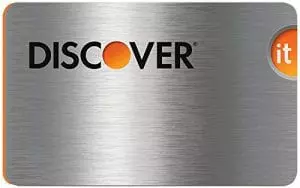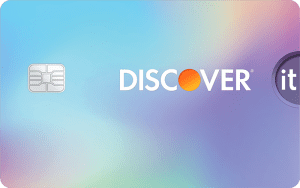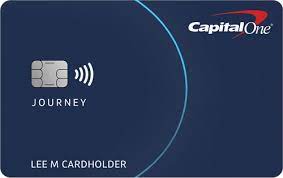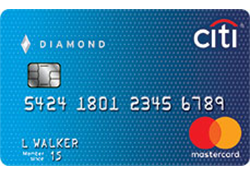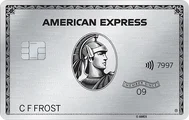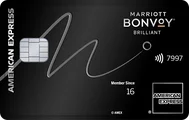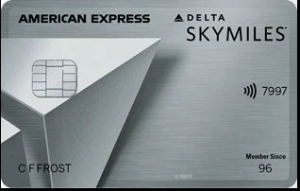Table Of Content

What Is A Student Credit Card?
As the name suggests, student credit cards are designed to best suit the needs of students. The main mechanics of student credit cards are similar to other credit cards. However, they do have a number of specific characteristics, such as:
- Rewards suited for students – While student credit cards aren't performing as rewards cards, they typically offer rewards that can be useful for students.
- Low or no annual fees – To make credit cards more affordable for students, most student credit cards have very low or no annual fees.
- Free credit reports – Many student credit cards offer free credit reports to their clients. The reports are updated every month, and customers can view them using online or mobile banking applications. This is very handy for those who look forward to establishing and improving their credit.
- Easier approval process – In most cases, getting approved for a student credit card is easier than getting a regular credit card. Therefore, they can be a decent option for those students who need a card with no credit history.
How Student Card Can Help You Build Credit?
Student credit cards can be beneficial for establishing and improving one’s credit score. Here are several ways it can be helpful in that regard:
- The first step for building credit – For some, getting started with credit can be tough because they struggle to get approved for a credit card. However, student credit cards often have lower approval requirements, making them a great option for those with no credit history to begin building their credit.
- Making Payments – The payment history is the most significant component of the FICO score, accounting for 35%. So if the owner of a student credit card keeps making payments on time, this can help build a credit score. In addition, since many student credit cards charge little or no annual fees, this can be an affordable option for establishing credit.
- Checking credit reports – Many student credit cards, such as BankAmericard Credit Card for Students, allow customers to access their credit reports for free. This will enable them to keep an eye on the latest changes in their credit report and credit score. This can also be motivating since they can see improvements in their credit score due to their efforts.
- Length of credit history – This is yet another component of the FICO score, accounting for 15%. Therefore, if students keep their credit cards for several years, this can allow them to achieve further improvements in their credit scores.
Are Student Credit Cards Worth It? Pros & Cons
For many students, it can be a great starting card to build credit. Student credit cards do have advantages, but also some drawbacks to consider.
Pros | Cons |
|---|---|
Opportunity To Build Credit | Limited Availability |
Rewards & Cash Back | Limited Rewards |
Funds For An Emergency | |
Experience Managing Debt |
- Opportunity To Build Credit
Student credit cards give people the opportunity to build their credit early on, while they are still in college.
If they keep making payments on time for years, then by the time of graduation, they can have a decent credit score, which can be very helpful for obtaining a rewards or cash-back card, mortgage, car loans, and other types of loans.
- Rewards & Cash Back
Many credit cards give customers an opportunity to earn some cash back and other rewards for their spending.
Since students still have to spend money on groceries, transportation, and other needs, it is helpful to earn some rewards along the way.
- Funds For An Emergency
Many students have no significant amount of cash reserves in their savings account to call upon in the case of emergency. However, those who have a student credit card can use it to deal with those emergencies.
Obviously, this can not be a full replacement for a fully-funded emergency fund in the savings account. However, it can still give students something to fall back in the case of financial difficulties.
- Experience Managing Debt
With student credit cards, young people can get valuable experience in managing debt and their personal finances in general.
When using credit cards, students need to control their spending and make sure that they do not miss their monthly payments.
Those personal finance skills, in the future, can be very valuable for the rest of their lives.
- Limited availability
As the Discover website explains, One of the main downsides of student credit cards is that in many cases you might be asked to provide proof that you are a student.
Therefore, if you are not a student, then you have to look for alternatives. Although, it is important to mention that this is not the case with all student credit cards.
- Limited Rewards
Student cards offer some rewards, but it's far from what you can get on other cash back, points, or travel cards.
In addition, to be eligible for such a card, the credit score should be at least good.
How To Choose Student Credit Cards?
If you plan to apply for a student credit card, there are several important factors to consider, when choosing a card:
- Cash bonuses and rewards – One of the factors to consider when choosing a student credit card is the availability of cash bonuses or other types of rewards.
- 0% APR introductory rate – There are several credit cards that offer 0% introductory rates to new customers for a specific period of time. This means that during this period customers do not pay any interest, even if they maintain unpaid balances by the end of each statement period.
- Free FICO score updates – If building credit is important to you, then it is helpful to get a student credit card that offers free monthly FICO score updates. This allows you to keep an eye on the latest developments with your credit score and measure your progress.
- Limits on cash back – It is a well-known fact that with many cash-back credit cards, there is an upper limit on how much cash back you can earn per year.
Card | Rewards | Bonus | Annual Fee | ||
|---|---|---|---|---|---|
| Discover it® Student Chrome | 1-2%
2% cashback at gas and restaurants (up to $1,000 every quarter) and 1% on groceries and other student related products
| Match Bonus | $0 | Review |
| Discover It Student Cash Back | 1-5%
5% cash back on activated rotating category purchases (up to $1,500 in purchases each quarter, then 1%) and 1% on all other purchases
| Match Bonus
Discover will automatically match all cash back you earn at the end of your first year with the card without a minimum spending requirement or maximum rewards.
| $0 | Review |
| Petal® 2 “Cash Back, No Fees” Visa® Credit Card
| 1.5% – 10%
Earn 2% – 10% cash back at select local and national merchants. Up to 1.5%
on everyday purchases
| None | $0 | Review |
| The Journey Student Rewards from Capital One | Up to 1.25%
earn 1% cash back and another 0.25% if you pay on time, so you can boost your cash back to a total of 1.25%
| None
$5 per month for 12 months on select streaming subscriptions when you pay on time
| $0 | Review |
| Citi® Secured Mastercard® | None | None | $0 | Review |
How To Get A Student Credit Card?
If you want to get a student credit card, there are several steps to take; here is the complete list of those:
- Choosing a credit card – The first step is to select the credit card you want, considering all the important factors described above. If it's your fi
- Preparing documentation involves required documents to support your credit cards application, such as ID, proof of address, and others. Sometimes, you also have to prove that you are a student.
- Submitting your application – You can submit your application in person with the bank's representative or via an online or mobile banking application. After some time, you will get a response about whether or not your application has been approved.
- Activating your credit card – If your credit card application is approved, you will get a card by mail with instructions on where to call and what steps to follow to activate your card. This is a safety measure to ensure that if the card gets lost, someone else will not be able to use the card for purchases or withdraw funds from an ATM.
How To Maximize Student Credit Cards?
If you want to maximize the benefits of student credit cards, there are a number of tips on how to go about it. Here are some of them:
- Utilizing Cash Back Rewards – One of the ways to maximize rewards with your student credit cards is to choose those cards, which offer some cash back on those categories where you spend most of your money. For example, SavorOne Rewards for Students allows students to earn 3% cash back on dining, entertainment, and on purchases made at grocery stores, without annual limits.
- Get Your Bonus – There are many student credit cards that offer a certain amount of cash bonuses to students if they meet certain requirements.
- Taking Advantage Of 0% APR Period – There are many student credit cards that offer 0% APR for some periods. Therefore, if you carry balances then you can transfer them to a 0% APR credit card and save some money in the process. However, before doing that it is important to keep in mind that you have to pay some balance transfer fees.
- Build Your Score – As explained above many student credit cards offer those types of reports for free, so you can get the latest updates about your credit score and credit history. Making monthly payments on time and considering your credit utilization can improve your credit score.
Which Student Credit Card Is Best?
There are some student credit cards, which are worth considering, due to a number of benefits, here is the list for some of those:
- Capital One Quicksilver Rewards for Students – One of the advantages of this card is that it charges no transaction fees when you spend money abroad, instead of charging you with a standard 3% foreign transaction fee. Therefore, this card can be useful for those who travel abroad.
- Journey Student Credit Card from Capital One – With this card, you get automatic credit line reviews every 6 months. That means you don’t have to request a higher limit—Capital One will periodically review your payment history, income, and other factors, and may increase your credit limit on their own.
- Deserve® EDU MasterCard for Students – This card offers Amazon Prime for one year for free. This can be helpful for those people who shop at Amazon on a regular basis.
What To Do If I Was Rejected?
As mentioned before, getting approved for a student credit card is generally easier. However, this does not mean that approval is 100% guaranteed. There can be several reasons for being denied and some remedies as well:
- Poor credit rating – In the past, you might have missing payments or outstanding unpaid debts in your credit report. One way to deal with this is to get a secured credit card instead; in this way, you can slowly rebuild your credit and improve your credit score.
- No source of income – Your credit application for a student credit card might be denied because of a lack of sources of income. If this happens, you can look for at least a part-time job to show some regular source of income to the banks, making it more likely that they will approve the credit card application.
- Identity theft – Chances are low, but you might be a victim in rare cases. If somebody gets their hands on your personal information, they can use those details to open credit card accounts in your name. They can then use the credit limit and leave the balance unpaid. If this happens, you can report the identity theft; after you submit your report, you will be provided with a plan for restoring control and dealing with the damages of identity theft.
FAQs
Generally speaking, you need to provide proof of income or get an adult cosigner in order to get a student credit card.
However, you can be approved for a credit card with low income.
There is a chance to be approved with even bad credit.
However, this is far from guaranteed and you might get rejected. If this happens, then it might be a better idea to apply for a secured credit card and rebuild your credit rating.
Many student credit cards are designed exclusively for students, and you have to prove that you are a student.
However, this is not the case for all student credit cards. For example, Journey Student Credit Card from Capital One does not require proof of being a student.
Students still get a credit card if they do not have any job if they have an adult cosigner to their credit card application.
This means that if a student fails to make payments and defaults on his or her debt obligations, then the cosigner will step in to cover those debts.
As the Chase bank website explains, international students can get a credit card in some cases.
For example, if international students have a part-time job, or if they apply for a secured credit card and come up with the security deposit then they can be approved for credit cards.
There are several options to fill out this section. Students can list income from their job or regular deposits from their family members. They can also put in any financial aid that they might be receiving.
There is no standard answer for how many credit cards should students have.
For some students, it might be best to have just one credit card since they might have a hard time managing several monthly payments and carrying balances on different cards.
On the other hand, there are those students who have no problem with managing several credit cards and are keeping their credit utilization ratio low in the process.
Amazon Rewards Visa Card can have some useful benefits for students.
Therefore, this card might be very useful for those students who spend their money frequently at Amazon and Whole Foods Market.
If you shop regularly at Apple, it might be worth it, if you have the required score for an Apple card. With the Apple card, you can also choose to pay for Apple products in monthly installments, without paying any interest. Calculate how many rewards you can get compared to other student cards.
There are several reasons why many credit card companies and banks target college students. Firstly, those financial institutions are looking forward to gaining more loyal customers. Therefore, they assume that at least some of those students will continue using their credit cards even after graduation.
In addition to that, credit card companies earn money on late payment fees as well as from interest payments.
Top Offers
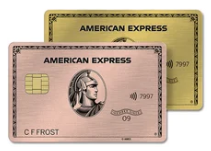

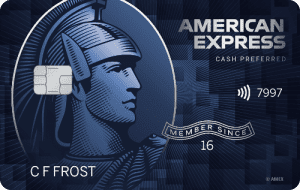
Top Offers From Our Partners
Top Offers




